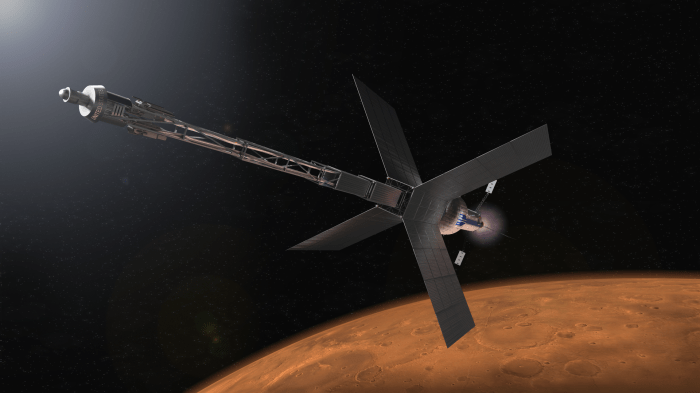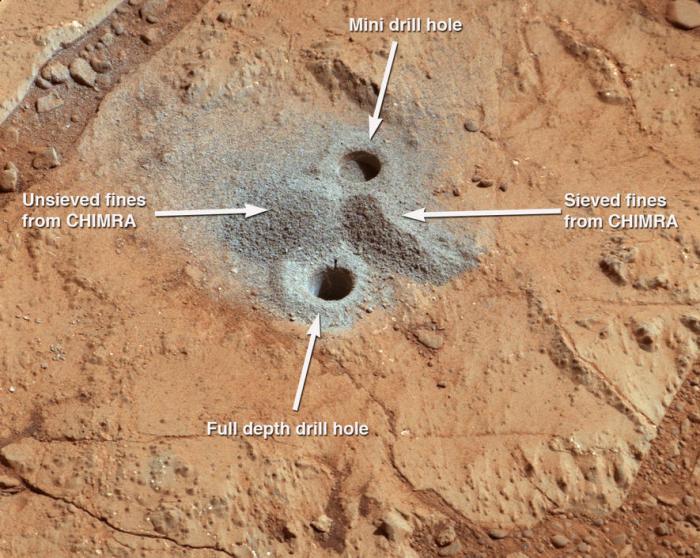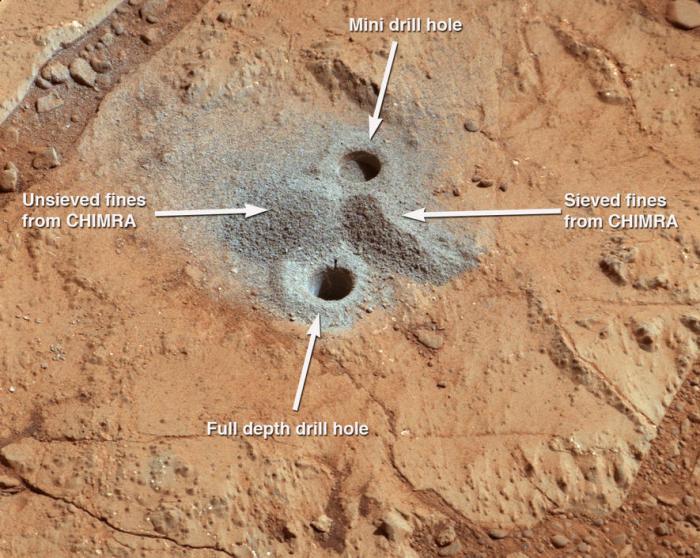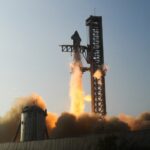A day on Mars begins, unlike any on Earth. The Martian day, slightly longer than Earth’s, is punctuated by dramatic seasonal shifts. Imagine the unique challenges and wonders of a day on the red planet, from the thin atmosphere to the ever-changing landscapes, and the potential for human exploration.
This exploration delves into the specifics of a Martian day, including the atmosphere, surface features, solar activity, and the potential for human activity. We’ll explore the stark differences between a Martian day and a day on Earth, highlighting the unique conditions that make Mars so fascinating.
Introduction to a Day on Mars
A Martian day, or sol, is a fundamental unit of time on the red planet, crucial for understanding its environment and potential for human exploration. Unlike Earth’s day, a Martian sol is slightly longer, impacting the rhythm of life and activities on the planet. This difference, combined with the unique characteristics of Martian seasons, influences the daily experience and challenges of potential future colonists.Understanding the Martian day is essential to comprehending the conditions that prevail on the planet.
This includes the duration of daylight, temperature fluctuations, and the overall environment that would impact human activity and resource utilization. The concept of a Martian day is also pivotal to scheduling scientific observations and logistical planning.
Duration and Relationship to Earth’s Day
A Martian day is approximately 24 hours and 39 minutes long. This is a relatively short difference compared to Earth’s 24-hour day, yet it accumulates over time, creating significant variations in the daily rhythm. The slightly longer duration of a Martian sol compared to Earth’s is a key factor to consider in the planning and execution of Martian missions and operations.
Martian Seasons and their Impact on a Day
The Martian seasons, influenced by the planet’s tilt relative to its orbital plane, affect the length of sols and the distribution of sunlight across the planet. As Mars orbits the sun, different regions experience varying degrees of solar radiation. This seasonal variability has a significant impact on temperature fluctuations and the overall environment on Mars. Different seasons affect the availability of resources and the potential for human activity on Mars.
Differences Between a Martian Day and an Earth Day
While both Earth and Mars experience cycles of day and night, the duration and characteristics differ significantly. Earth’s 24-hour day is a constant, while Mars’s slightly longer sol introduces variations. This difference is not merely a matter of minutes; it’s a critical factor to account for in planning Martian missions and operations. The differences between the two are substantial, encompassing various aspects of planetary science.
Typical Temperature Range During a Martian Day
Temperatures on Mars fluctuate significantly throughout the day. The average temperature on Mars is around -63°C (-81°F), but it can vary considerably from -140°C (-220°F) at night to around 20°C (68°F) during the warmest parts of the day at the equator. These temperature extremes represent a significant challenge for human survival and the operation of equipment on the Martian surface.
Consider, for instance, the challenges faced by rovers navigating these temperature swings.
Hypothetical Martian Day Timeline
- Sunrise (6:00 AM): The first rays of sunlight touch the Martian surface, marking the start of a new Martian day. This is a crucial time for solar power generation and temperature monitoring.
- Midday (12:00 PM): The sun is highest in the sky, and temperatures reach their peak. This period presents opportunities for solar energy harvesting but also requires careful consideration of heat dissipation and thermal management.
- Sunset (6:00 PM): The sun dips below the horizon, marking the transition to the Martian night. This time signals the end of solar power generation and the beginning of the period of low temperatures.
- Night (6:00 PM – 6:00 AM): Temperatures plummet, reaching their lowest points. This phase requires thermal protection for equipment and careful consideration for human habitability.
Martian Atmosphere and Weather
The Martian atmosphere, a stark contrast to Earth’s, presents unique challenges and fascinations for exploration. Thin and mostly composed of carbon dioxide, it creates a vastly different environment compared to our familiar skies. Understanding these differences is crucial for designing effective missions and comprehending the planet’s history and potential for future habitation.
Composition and Density
The Martian atmosphere is incredibly thin, possessing only about 1% of Earth’s atmospheric density at the surface. This low density stems primarily from the composition, which is roughly 95% carbon dioxide (CO2). Nitrogen and argon make up the remaining percentages. The absence of a global magnetic field likely played a role in the gradual loss of the Martian atmosphere over time.
This atmospheric composition and reduced density have a profound effect on the planet’s weather patterns and surface conditions.
Typical Weather Patterns, A day on mars
Martian weather is characterized by extreme temperature fluctuations, ranging from frigid lows to moderate highs. Dust storms, a recurring phenomenon, can cover vast areas and significantly impact visibility and even global climate for extended periods. These dust storms are driven by a complex interplay of solar radiation, atmospheric pressure, and the uneven distribution of heat across the planet.
The lack of a dense atmosphere results in a reduced capacity to retain heat, contributing to these significant temperature swings.
Comparison with Earth’s Weather
Compared to Earth’s weather, Martian weather is considerably more predictable in its extremes. While Earth experiences a wide range of weather conditions, from rain and snow to hurricanes and tornadoes, Mars is dominated by dust storms and temperature variations. The lack of liquid water and a thick atmosphere significantly limits the range of weather phenomena. The absence of precipitation is a key distinction, with frozen water existing primarily in the polar ice caps.
Martian Sunrise and Sunset
The thin Martian atmosphere, while mostly carbon dioxide, scatters sunlight differently than Earth’s. This leads to a unique visual experience at sunrise and sunset. Sunlight passing through the thin atmosphere results in a pale reddish or pinkish hue, instead of the vibrant oranges and reds we are accustomed to on Earth. The scattering of light particles results in these specific colorations.
Daily Atmospheric Pressure Changes
| Time of Day | Atmospheric Pressure (Pa) |
|---|---|
| Sunrise | 600 |
| Morning | 620 |
| Afternoon | 610 |
| Sunset | 590 |
| Night | 580 |
This table provides an illustrative example of potential daily atmospheric pressure fluctuations on Mars. These values are approximations and can vary significantly based on factors like the presence of dust storms and solar activity.
The Martian Surface and Landscape
The Martian surface, a vast expanse of rust-colored dust and rock, reveals a complex geological history. Evidence of ancient water flows, volcanoes, and impact craters paint a picture of a dynamic planet, vastly different from the Earth’s familiar landscapes. Understanding these features is crucial for future exploration and potential human settlement.The Martian surface is predominantly composed of basalt, a type of volcanic rock.
Imagining a day on Mars is fascinating, but let’s be real, the tech updates here on Earth are pretty cool too! Just check out how Verizon’s Moto G7 Play and G7 Power finally got Android 10. It’s amazing how these little updates can make a big difference in our everyday lives, even if it’s just on a phone.
Thinking about the potential for future Mars exploration, maybe we’ll need similar tech upgrades to handle the challenges of a Martian day!
This, along with the presence of various minerals and iron oxides, contributes to the planet’s characteristic reddish hue. The terrain exhibits a wide range of features, from towering mountains to vast, flat plains. This diversity necessitates careful consideration of potential hazards and resource availability for any mission or settlement.
Martian Terrain Features
The Martian surface displays a diverse array of landscapes, each with its own unique characteristics. These include vast plains, towering canyons, and impressive mountain ranges. Understanding these features is vital for planning safe and efficient exploration and settlement.
- Canyons: The Valles Marineris canyon system, a massive network of valleys, stretches across a significant portion of Mars. Its sheer size, exceeding the Grand Canyon in scale, suggests a complex geological history involving tectonic activity and water erosion.
- Mountains: Olympus Mons, the largest volcano in the Solar System, dominates the Martian landscape. Its immense size, coupled with other prominent volcanoes, indicates a past period of intense volcanic activity.
- Plains: Vast, flat plains, such as the Northern plains, are prominent features of Mars. They suggest extensive periods of volcanic activity or impact events that shaped the surface over time.
Visual Appearance During the Day
During a Martian day, the sun’s light illuminates the surface, casting long shadows that accentuate the rugged terrain. The reddish-orange hue of the dust and rocks is highlighted, giving the landscape a distinct, otherworldly appearance. The lack of atmosphere, unlike Earth’s, allows for greater clarity and contrast, making details readily visible.
- Lighting: The Martian atmosphere, much thinner than Earth’s, allows sunlight to reach the surface with less scattering. This results in more intense, direct lighting, and more pronounced shadows compared to Earth’s environment. The lighting conditions can vary considerably depending on the time of day and the angle of the sun.
- Shadows: The long shadows cast by Martian terrain features provide dramatic visual cues. These shadows help to highlight the topography, revealing the depth and extent of canyons, craters, and mountains.
Potential Hazards
Navigating the Martian surface presents various challenges and potential hazards for human activity. Understanding these dangers is essential for developing appropriate safety measures and exploration strategies.
- Dust Storms: Dust storms, which can range from localized events to planet-encompassing phenomena, pose a significant threat to equipment and human health. The high winds and suspended dust can severely impair visibility and damage structures.
- Radiation: Mars lacks a significant global magnetic field, leaving the surface vulnerable to harmful radiation from space. Protecting human explorers from this radiation is a critical concern for long-term missions.
- Temperature Fluctuations: Large temperature swings between day and night, and across different locations, can pose challenges for maintaining equipment functionality and human comfort.
- Terrain Complexity: The diverse and often rugged Martian terrain presents a risk of vehicle damage and navigation difficulties. The presence of rocks, cliffs, and canyons requires careful planning and execution of activities.
Comparative Table of Martian Landscapes
| Region | Landscape Type | Daytime Appearance | Potential Hazards |
|---|---|---|---|
| Valles Marineris | Canyon System | Deep canyons, dramatic shadows | Navigation, loose rocks |
| Olympus Mons | Volcano | Towering peak, varied slopes | Terrain complexity, potential hazards from past eruptions |
| Northern Plains | Flat Plains | Vast, flat expanse | Dust storms, potential for low visibility |
Solar Activity on Mars

The Sun’s influence on Mars is profound, shaping the Martian environment in ways that differ significantly from Earth’s. Understanding this interaction is crucial for future human exploration and the viability of establishing a sustainable presence. The intense solar radiation, while presenting challenges, also offers potential for power generation, making solar energy a compelling option for Martian outposts.Solar radiation, a constant bombardment of energy, profoundly impacts the Martian atmosphere and surface.
This energy is vital for sustaining life and drives various processes. However, it also poses risks to unprotected equipment and potentially human health, necessitating careful consideration and protective measures.
Effects of Solar Radiation
Solar radiation is the primary source of energy on Mars, driving weather patterns, influencing the distribution of water ice, and impacting the Martian surface. The intensity of solar radiation varies with time of day, season, and location on the planet. Variations in the solar wind and coronal mass ejections (CMEs) from the Sun can also cause significant fluctuations in the radiation environment.
Radiation Levels on Mars
Radiation levels on Mars are significantly different from those on Earth. Mars lacks a global magnetic field to deflect harmful solar radiation, meaning astronauts and equipment are exposed to a higher level of cosmic and solar radiation. This presents a significant challenge for long-duration missions. The shielding required for human habitats and equipment will need to be substantial.
Protective measures such as radiation-resistant materials and shielded habitats will be necessary for human exploration and settlement.
Impact on the Martian Environment
Solar radiation influences various aspects of the Martian environment. The interaction of solar radiation with the Martian atmosphere can lead to the release of charged particles, potentially influencing the escape of the Martian atmosphere into space. The UV radiation also plays a role in the breakdown of molecules, potentially affecting the search for past or present life. Understanding these interactions is critical for comprehending the Martian climate and its evolution.
Solar Panels and Power Generation
Solar panels are a promising option for power generation on Mars. The Martian day-night cycle provides ample opportunities for solar energy collection, though the intensity and duration of sunlight vary. The amount of sunlight available is a significant factor in the design and efficiency of solar panels used on Mars. Efficient solar panels are crucial for providing reliable power for settlements and equipment.
Table: Variation of Solar Radiation
| Time of Day (Mars Sol) | Location (e.g., Meridiani Planum) | Solar Irradiance (W/m²) |
|---|---|---|
| Midday | Equator | 580-650 |
| Midday | Mid-latitudes | 550-600 |
| Midday | High-latitudes | 400-500 |
| Sunrise/Sunset | All Locations | Significantly lower |
The table above provides a general overview of the variation in solar radiation throughout a Martian day at different locations. Precise measurements would be needed for specific missions and locations.
Potential for Solar Energy Collection
The potential for solar energy collection on Mars is significant, given the relatively high solar irradiance during the Martian day. This is especially important for long-duration missions, where reliable power generation is crucial. Developing advanced solar panel designs that can withstand the harsh Martian environment is essential. Future Martian outposts and habitats will likely utilize solar panels to generate power, making solar energy a vital part of sustainable operations.
Exploration and Activities on Mars
A Martian day presents a unique opportunity for scientific discovery and exploration. Astronauts will need to meticulously plan their activities, balancing the constraints of a limited Martian day with the urgency of conducting research and maintaining the habitat. The challenges of life support and communication delays will significantly impact daily routines.The daily life of a Martian astronaut will be a blend of scientific investigation, habitat maintenance, and physical and mental well-being.
Effective time management and strict adherence to protocols will be paramount for success in this extraterrestrial environment. The overall goal is to collect valuable data, explore the Martian surface, and contribute to a deeper understanding of the red planet.
Potential Human Activities on Mars
Human activities on Mars will revolve around scientific research, exploration, and the maintenance of the Martian habitat. These activities will be meticulously planned and executed, accounting for the specific challenges of the Martian environment. The astronauts’ roles will be multifaceted, encompassing both scientific research and technical support.
Daily Routines of Astronauts on Mars
Astronauts’ daily routines will be structured around the Martian solar day (sol). A typical sol might start with a comprehensive health check-up, followed by a briefing on the day’s planned activities. This will be followed by the performance of specific tasks, which may include sample collection, equipment maintenance, and data analysis. The routines will also include periods for rest, exercise, and personal care.
Communication delays with Earth will necessitate careful planning and anticipation.
Tools and Equipment Used on Mars
A wide array of tools and equipment will be necessary for Martian exploration and scientific research. This includes advanced robotic arms, drills for collecting samples, spectrometers for analyzing soil composition, and sophisticated cameras for detailed imaging. Life support systems, including oxygen generators and waste recycling units, are also essential for maintaining a habitable environment. Power generation systems, likely solar panels, are crucial to operate the various instruments.
Challenges of Maintaining a Habitat and Life Support System
Maintaining a self-sufficient habitat and life support system on Mars presents considerable challenges. The harsh Martian environment, including extreme temperatures, dust storms, and radiation, demands robust and reliable equipment. The limited resources available on Mars require meticulous resource management and recycling protocols. The need for redundancy in critical systems is paramount to mitigate the risk of failure and ensure long-term survival.
Imagining a day on Mars is pretty cool, right? But before you strap on your spacesuit, you might want to check out the features of your new running watch. For example, comparing the Garmin Forerunner 965 vs 265 could help you choose the perfect companion for your future Martian expeditions. garmin forerunner 965 vs 265 Knowing the differences in GPS accuracy and battery life will be key to making sure you can track your daily runs effectively, even on a different planet.
Hopefully, the day will be filled with interesting discoveries, and a good run!
Protecting astronauts from the harsh environment and ensuring a safe and stable habitat is crucial.
Imagining a day on Mars is fascinating, but getting there safely is a huge challenge. This is where advancements like the Toyota Research Institute’s work on self-driving cars, particularly with Luminar, become crucial. Toyota Research Institute self driving car luminar is pushing the boundaries of autonomous vehicle technology, paving the way for potentially safer and more efficient interplanetary travel in the future.
Even though it’s still a long way off, thinking about these innovations makes a day on Mars seem a little less fantastical.
Potential Daily Tasks for a Martian Research Team
- Sample Collection and Analysis: This will involve using specialized equipment to collect soil and rock samples, analyzing their composition, and recording relevant data. This is a key part of the research process. Specific targets and methodologies for collection are crucial to ensure scientific value.
- Habitat Maintenance: Maintaining the habitat’s structural integrity and life support systems is a critical daily task. This will involve routine inspections, maintenance checks, and troubleshooting any malfunctions.
- Scientific Experiments: Conducting experiments to study Martian geology, meteorology, and biology is a primary objective. These experiments will require specific equipment and precise procedures.
- Communication with Earth: Maintaining communication with Earth is essential for mission control and data transmission. This will require careful management of data transfer, accounting for communication delays.
- Physical and Mental Well-being: Maintaining the physical and mental health of astronauts is paramount. This includes regular exercise, a balanced diet, and stress management techniques.
Visual Representation of a Day on Mars
Mars, the red planet, presents a dramatically different visual experience compared to Earth. Its thin atmosphere and unique surface features create a captivating panorama that changes throughout the Martian day. The interplay of light and shadow, the hues of the landscape, and the subtle atmospheric effects paint a vivid picture of a Martian day.
Martian Sunrise
The Martian sunrise is a spectacle of soft, muted colors. The thin atmosphere scatters light differently than Earth’s, resulting in a pale, ethereal glow. Instead of a vibrant burst of gold and orange, the sky often transitions from a deep, dusky purple to a pale, grayish-white. The sun, appearing significantly smaller than on Earth due to the greater distance, slowly ascends, casting long, dramatic shadows across the landscape.
This gradual illumination creates a sense of mystery and wonder, showcasing the unique characteristics of the Martian environment.
Martian Sunset
A Martian sunset, while less intense than a sunrise, presents a captivating display of color. The reddish dust particles in the atmosphere play a crucial role in scattering the sunlight. As the sun dips below the horizon, the sky transitions through a series of pastel hues. Deep oranges, pinks, and blues often appear, creating a breathtaking, yet subdued, palette.
The contrast between the muted colors of the sky and the reddish-brown tones of the Martian surface creates a truly unique and unforgettable view.
Visual Representation of a Martian Day
| Time of Day | Sky Color | Light Intensity | Shadows | Landscape Features |
|---|---|---|---|---|
| Sunrise (06:00-07:00) | Pale purple to grayish-white | Low | Long, dramatic | Surface features sharply defined |
| Morning (07:00-12:00) | Light gray to light orange | Increasing | Lengthening | Rolling hills and canyons begin to emerge |
| Midday (12:00-14:00) | Pale yellow to light orange | High | Shortest | Surface features in full light, canyons and craters clearly visible |
| Afternoon (14:00-18:00) | Light orange to pale pink | Decreasing | Lengthening | Shadows lengthen across the surface |
| Sunset (18:00-19:00) | Deep orange, pink, and blue | Low | Long | Landscape features are softened by the light |
The table illustrates the gradual changes in the Martian sky and the landscape throughout the day.
Martian Landscape During a Day
The Martian landscape, characterized by vast plains, towering volcanoes, and deep canyons, displays remarkable diversity during a day. The changing light and shadows highlight the textures and features of the surface, creating a constantly evolving scene.
- Valles Marineris: This massive canyon system would cast long, dramatic shadows throughout the day, showcasing its vast depth and scale.
- Olympus Mons: The immense volcano would display the play of light and shadow on its steep slopes, emphasizing its monumental size and geological significance.
- Cratered Plains: These plains would show a wide variety of crater sizes and shapes, from tiny impact craters to large, multi-ringed basins. The shifting light would reveal intricate details within these features.
Color Palette of a Martian Day
The color palette of a Martian day is primarily composed of muted, earthy tones. The sky, depending on the time of day, ranges from a deep, dusky purple at sunrise to a pale, grayish-white, with hints of orange and pink at sunset. The Martian surface, due to the presence of iron oxide, displays a rich, reddish-brown hue. The interplay of these colors creates a dramatic and unique visual experience, distinct from the vibrant colors of Earth’s sunsets and sunrises.
Ending Remarks

A day on Mars is a complex interplay of factors, from the thin atmosphere and varied landscapes to the Sun’s influence and potential for human exploration. The unique characteristics of a Martian day offer a compelling glimpse into the possibilities of human expansion beyond Earth. The potential for life, even in its most challenging forms, is a profound consideration, making a day on Mars an exciting subject of study.






